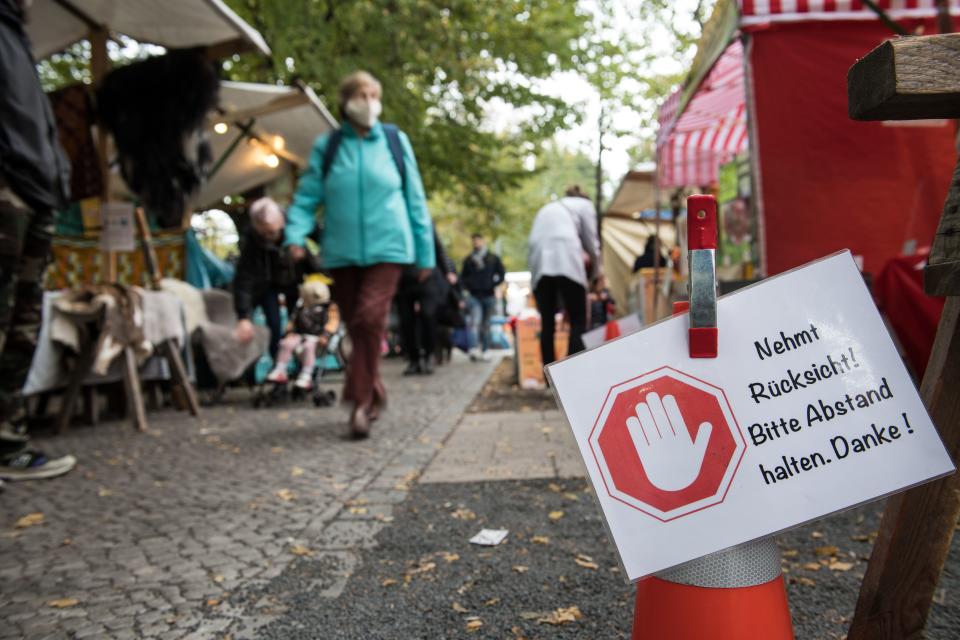Germany ramps up restrictions as coronavirus cases hit new highs

Germany, which managed to keep the coronavirus pandemic under relatively tight control with early lockdowns, has not escaped the second wave that is sweeping across Europe.
On Wednesday, the Robert Koch Institute reported 7,595 new confirmed cases over 24-hour period, after 6,868 on Tuesday.
These daily new-case tallies are now higher that in the first wave in March and April. However, Germany is carrying out much greater levels of testing, meaning the number of undetected cases is lower.
Germany’s total cases stand at 380,762, with 9,875 deaths from the virus so far. The death toll is much lower than in Spain, the UK, and France, but still a major worry. Chancellor Angela Merkel warned in September that cases could hit over 19,000 a day by year end if the situation was not brought under control.
In her weekend podcast, Merkel urged everyone to meet with fewer people and not to make non-essential trips or go to celebrations that could be avoided.
READ MORE: German economic recovery to lose steam as pandemic continues to dominate
The number of areas designated as ‘high risk’ — more than 50 new infections per 100,000 people over seven days— keeps growing.
A meeting between Merkel and state leaders last week did not produce a uniform plan on new restrictions across the country, meaning citizens must try to figure out a confusing hotchpotch of rules — including whether they can travel to other German states without a negative test or a 14-day quarantine on arrival.
Berlin has imposed an 11pm curfew on restaurants, and will make masks also mandatory in outdoor markets and its busiest shopping streets.
READ MORE: German government defends curfews and travel bans amid outcry from businesses
In Bavaria, Germany’s largest state by size, a total local lockdown is in force for the Berchtesgadener district, requiring all restaurants, schools and kindergartens to remain shut.
In general, the recommendation is for a tier system. For example, when new infections surpass 35-per-100,000 in seven days, then masks will be mandatory in public places and gatherings limited to 25 outdoors and 15 indoors.
When new infections go over 50 per 100,000, then gatherings are limited to 10 people, or two households, and restaurants and bars should close at 11pm.
Bavaria’s interior minister Joachim Herrmann proposed the idea of closing German borders again, as happened in spring.
"The discussion about intensified border controls could flare up again if the incidence of infection in neighbouring countries gets out of control," Hermann told Funke Media on Tuesday.
WATCH: Slim possibility of a COVID-19 vaccine by Christmas

 Yahoo News
Yahoo News 